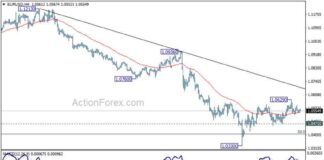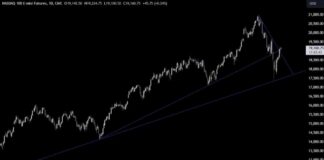Stock Market Volatility: What to Expect in September
August Recap: A Rollercoaster Ride
As August comes to a close, investors are reflecting on one of the most volatile months in recent memory. The month started off on a shaky note, with major U.S. stock indexes experiencing a dramatic sell-off due to soft manufacturing and jobs data. Concerns about the Federal Reserve’s delay in cutting rates and the impact on the economy added to the market turbulence. Additionally, a surprise rate hike from the Bank of Japan fueled further uncertainty, leading to a rapid unwinding of the yen carry trade.
During the first three trading days of August, the Cboe Volatility Index (VIX) spiked to a 4-year high, and the S&P 500 lost over 6% of its value, amounting to nearly $3 trillion. However, the tide quickly turned, and the market rebounded with its best week of the year. Labor market worries eased, and positive earnings reports showed robust corporate profit growth in the second quarter, the fastest since 2021.
Despite the overall gains by the end of August, the journey was far from smooth. The market saw significant shifts in sector performance, with some of the traditional leaders lagging behind while others surged. Consumer Staples, Real Estate, and Healthcare emerged as the top-performing sectors, as investors sought out rate-sensitive stocks and dividend payers in anticipation of upcoming interest rate cuts.
Looking Ahead to September: What Lies Ahead?
As we turn the page to September, investors are bracing themselves for what historically has been a challenging month for stocks. While past performance is not indicative of future results, several upcoming events could impact market dynamics.
One highly anticipated event is Apple’s unveiling of the iPhone 16 on September 9, featuring its latest operating system capable of running generative AI. This launch could have ripple effects on tech stocks and consumer sentiment, potentially driving market movements.
Another key event on the horizon is the Federal Reserve’s policy meeting on September 18, where interest rate cuts are widely expected. The big question on everyone’s mind is the magnitude of the rate cuts. Fed funds futures trading data suggests a 30.5% probability of a half percentage point cut, a significant increase from a month ago. However, the consensus on Wall Street leans towards a more conservative quarter-point cut.
In the lead-up to the Fed meeting, investors will closely watch the release of August inflation data on September 11 and the jobs report on September 6. These economic indicators will play a crucial role in informing the Fed’s decision-making process, balancing the need to address inflation concerns while supporting continued growth in the labor market.
Market Outlook: Navigating Uncertainty in September
As we head into September, market participants are bracing for continued volatility and uncertainty. While the recent rebound in stocks has provided some relief, challenges remain on the horizon.
One factor contributing to market jitters is the ongoing geopolitical tensions, particularly in regions like Ukraine and the Middle East. Any escalation of conflicts or disruptions in global trade could have significant implications for market stability and investor sentiment.
Moreover, the evolving landscape of central bank policies adds another layer of complexity to the market outlook. The actions of major central banks, including the Federal Reserve, the European Central Bank, and the Bank of Japan, will be closely monitored for their impact on interest rates, currency valuations, and global economic growth.
In addition to macroeconomic factors, sector-specific developments will also shape market performance in September. Technology stocks, in particular, are poised to react to Apple’s product launch and any subsequent market reactions. Healthcare and biotech companies could see increased activity as investors focus on innovation and regulatory developments in the sector.
Strategies for Navigating Market Volatility
Given the potential for heightened volatility in September, investors may consider adopting strategies to manage risk and capitalize on opportunities in the market.
Diversification remains a key principle for mitigating risk in a volatile market environment. By spreading investments across different asset classes and sectors, investors can reduce their exposure to any single market fluctuation.
Another strategy to consider is dollar-cost averaging, which involves regularly investing a fixed amount of money over time, regardless of market conditions. This approach can help smooth out market fluctuations and take advantage of lower prices during downturns.
Furthermore, staying informed and conducting thorough research on market developments can provide valuable insights for making informed investment decisions. By staying abreast of economic indicators, corporate earnings reports, and geopolitical events, investors can position themselves to react effectively to market changes.
Conclusion: Navigating Uncertainty with Resilience
As we look ahead to September, investors are preparing for a period of heightened volatility and uncertainty in the stock market. While recent gains have provided a sense of relief, challenges remain as geopolitical tensions, central bank policies, and sector-specific developments continue to shape market dynamics.
By adopting strategies such as diversification, dollar-cost averaging, and staying informed, investors can navigate market volatility with resilience and confidence. While the road ahead may be bumpy, opportunities for growth and success abound for those who approach the market with a strategic mindset and a long-term perspective.

















